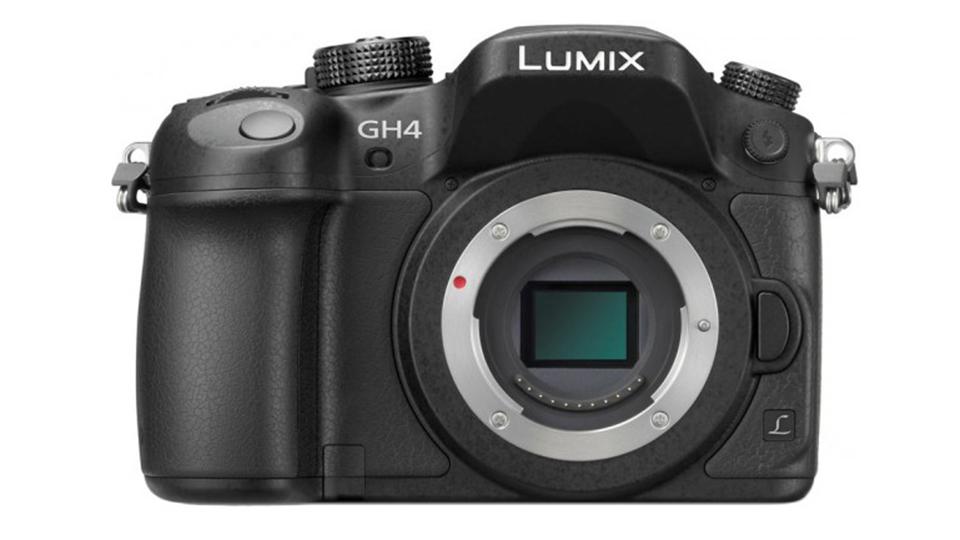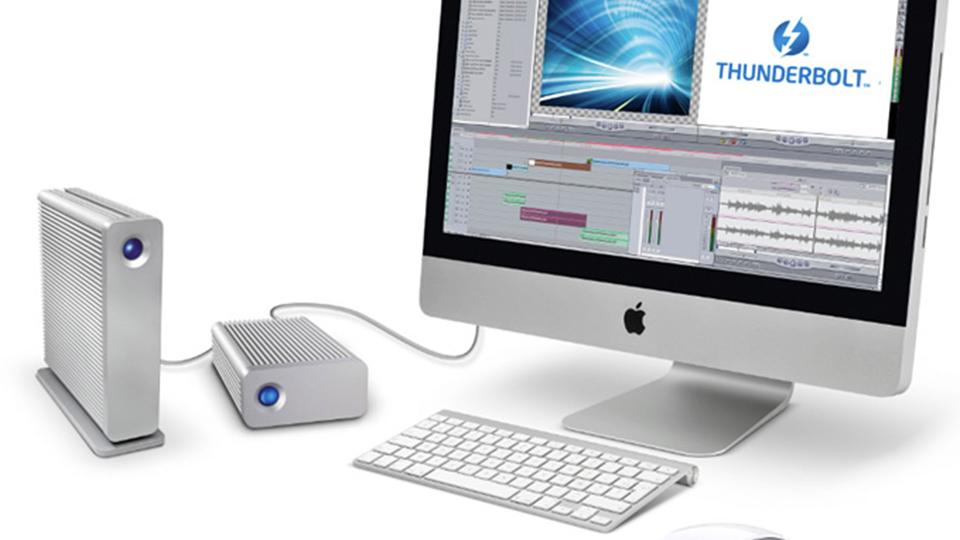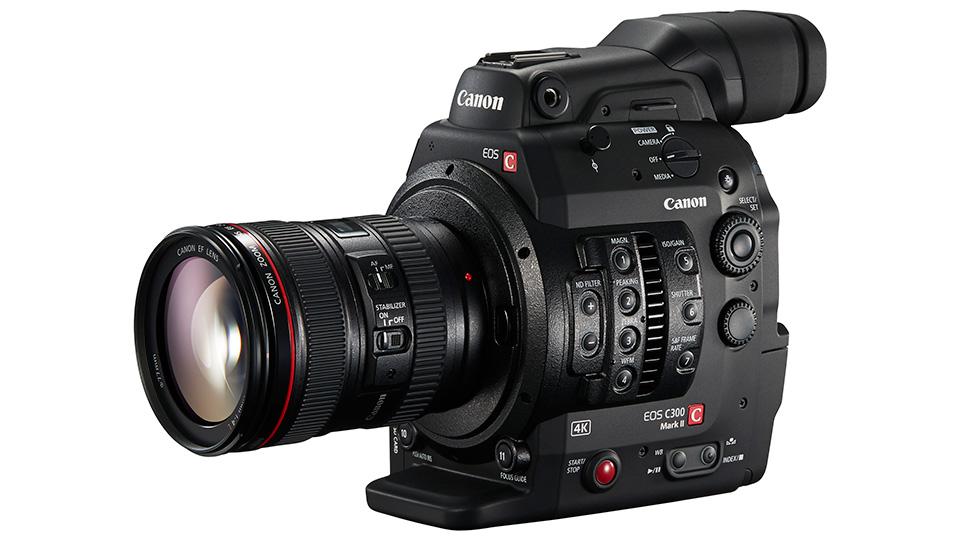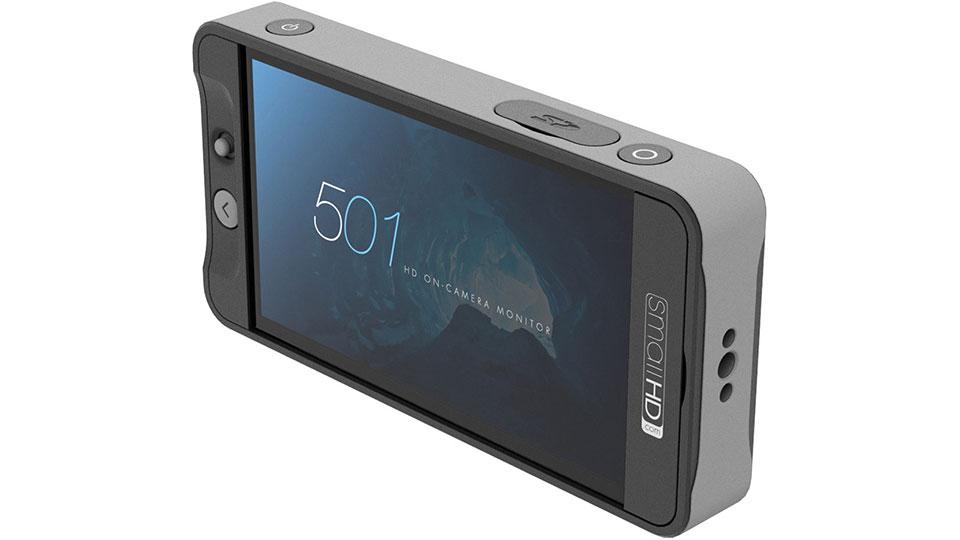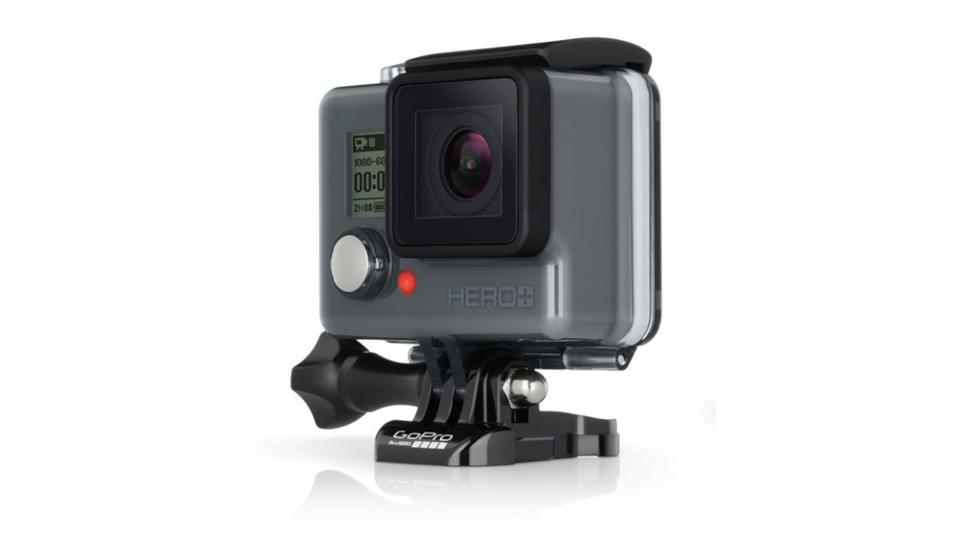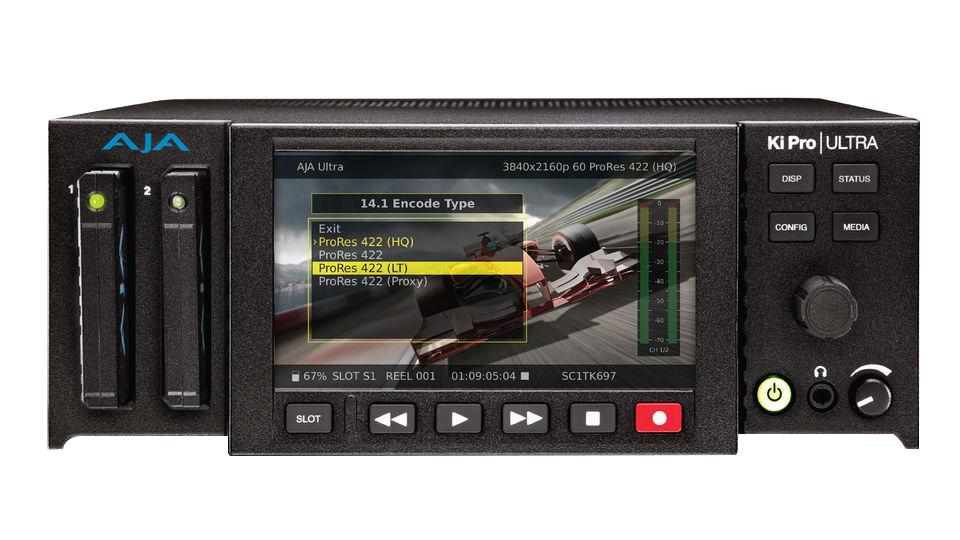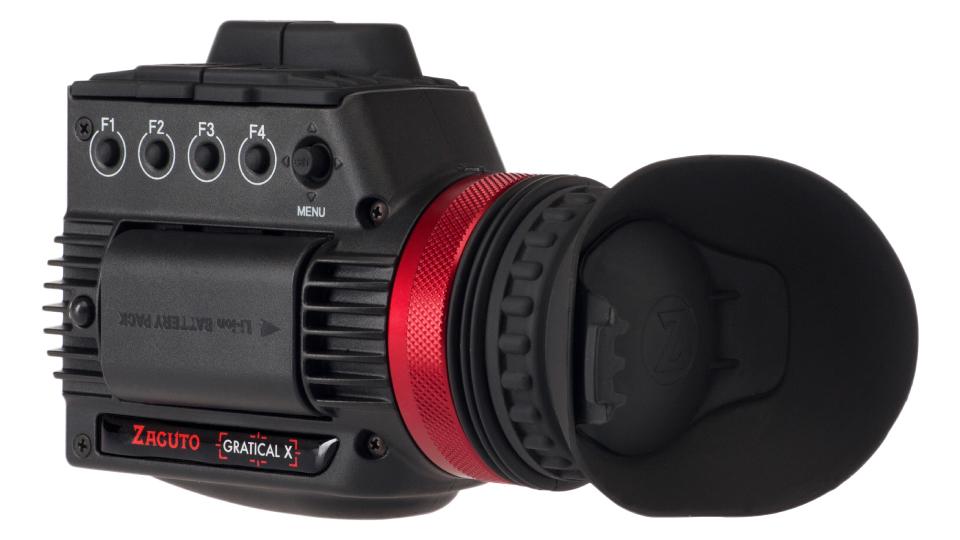Posts by UnCuco
01
Aug
The digital audio workstation which closest to the sound of an analog mixing desk
Bad is a single from American singer Michael Jackson's third English-language album Bad. Following the success of the album, fans began calling Michael the "King of Pop."
Released on August 31, 1987, the album was recorded and mixed by Bruce Swedi...
29
Jul
Is the era of analog consoles over?
We've seen a lot of reports over the years of the demise of analog gear, especially the big consoles, but the truth is they're still widely used in shows and events of all types and sizes.
Granted, part of the reason we see them at some shows ...
28
Jul
Talk about analog mixer music production
Analog mixer, the ultimate sound quality sound solution, is also a combination of top quality sound and a large engineering interface. Owning one of the best analog mixers is the dream of every aspiring musician.
In this age of universal digital, ...
28
Jul
The functions of the analog mixer and some professional terms explained
Gain, PAD, EQ, PAN, PEL, AUX etc., as beginners, when we get an analog mixer (hereafter referred to as mixer), we often encounter these confusing words. In this article, we will explain these words in detail.
The main contents of this article includ...
28
Jul
Why do so many people still use analog consoles for mixing?
Using an analog mixer aside from sound quality and installing X is usually a route. When recording, it is used as a return adjustment (using the FX channel) when mixing, switching comparison monitoring, switching mono, comparing mixing DEMO and so on...
28
Jul
Talk About Recording Mixer, Recording Sound card, etc.
There are a lot of netizens chatting with me about recording mixers, sound cards and other equipment. I picked the ones with high repetition and said:
1. About Mackie/Runningman
I saw that you introduced the Mackie mixer in the mic preamp and m...
26
Jul
The difference between studio lighting design and stage lighting design
Stage lighting design is mainly for the lighting design of theatrical stage performances, and studio lighting design is for the lighting design of TV program recording. The stage lighting design faces the live audience during the theatrical performan...
26
Jul
Small studios should play these five lights best
Lighting plays a role in creating atmosphere and setting off the environment in the specific environment of TV programs, and it often has a decisive impact on the entire scene design image of the studio. The lighting of the studio is roughly divided ...
26
Jul
Application of Lighting Equipment in TV News Studio
At present, due to the rapid development of energy-saving and environmentally friendly LED light source lamps, TV studios have also begun to use LED soft light and LED spotlights. Since news studios are mostly responsible for live broadcast tasks, th...
26
Jul
What equipment do you need in a recording studio?
A recording studio, also known as a recording studio, is a recording place for recording movies, songs, music, etc. The acoustic characteristics of the recording studio play a very important role in the quality of recording production and its product...
26
Jul
List of professional recording studio equipment
I believe many people are curious, how much equipment is needed to be called a professional recording studio? Many people who like to record want to build their own professional recording studio, so what does a professional personal recording studio ...
26
Jul
How to connect a mixer with USB to a computer to play, record or live?
Many analog mixers now have USB ports, such as the Yamaha MG XU series mixers. This type of console has a built-in USB digital audio interface, which can directly input computer audio into the mixer through USB for playback or transfer the output sig...
21
Jul
Recording software cooledit2.1 common problems and download
Cooledit - FAQ
★About rising and falling tonesCan I lower the pitch with Cool Edit, or do I need to download a plug-in?A: Under the single track, select lower pitch in Effect-Shifte...
21
Jul
Troubleshooting Common Problems During Recording-Mic/Labo-Dental/Slobber
The most common non-technical problems encountered when recording dry drafts of vocals in the studio are spray, labiodental, and saliva. The most troublesome thing is that no matter how careful you are with pronunciation and art...
21
Jul
Common problems and solutions for sticker (cover) recording
First of all, what is discussed here is the common problems in the pasting recording, that is, the cover recording. Usually in the cover singing circle, most people are exposed to one track of accompaniment + one or several trac...
21
Jul
Frequently Asked Questions about Recording and Solutions
Friends often ask me questions about the recording process. My friends asked very casually, but I was a little embarrassed about how to explain it. In fact, recording is not so simple - as long as you have inspiration, confidenc...
21
Jul
Common recording problems and solutions
Have you ever encountered some intractable situation with your recording equipment while recording, editing and mixing and didn't know how to fix it?
20
Jul
Why do studios have multiple pairs of monitor speakers?
Monitor speakers are an extension of the ear, how much budget is invested in speakers, the joy of creation and appreciation, and the improvement of mixing quality are still the most obvious. This article briefly introduces the types of monitor speake...
20
Jul
Analysis of sound in professional recording studio
Very fortunate that we now have more and more music equipment to choose from and what we can afford, and of course reviews of various music equipment and how to use them well have been discussed in our magazine as well After a lot, all of this is you...
20
Jul
Some common sense in recording studios and control rooms
A recording studio is also called a recording studio, which, as the name suggests, is a place for recording. It therefore has to meet the vocal conditions required by the environment used for recording. The environment of the recording plays a cr...
20
Jul
Recording studio decoration design requirements and general methods
Recording studio design requirements
The acoustic environment of the recording studio shall meet the relevant national regulations. The sound effect, reverberation coefficient, ...
19
Jul
How to choose a studio microphone? What are the differences between the microphones ?
Whether it is professional recording or home karaoke, the help of a microphone is inseparable. Especially for novices, a microphone with outstanding performance can bring better sound quality and timbre effect, so how to choose a microphone, Xianqi C...
18
Jul
Just seven steps to build a personal home recording studio
Due to the epidemic, many recording studios are unable to operate normally, but everyone has more and more needs for recording scenes, whether it is music production, podcast recording, post-mixing, live broadcast, self-media video dubbing, or person...
15
Jul
Which Tools Do You Need to be a Film Grip?
As a grip, it¡¯s your job to handle the lighting and rigging on the set. You¡¯ll set up, take down, move and adjust dollies and cranes and will also be responsible for the non-electrical side of modifying the lighting. A grip¡¯s work is vital to the ...
15
Jul
Making a Movie Without a Hollywood Budget and Big Crew
Most video seminars focus on the gear when talking about the DSLR as a movie-making tool, but few provide a case study, showing by example, how to take an idea, create a project and monetize it. There is a high demand right now for story-driven conte...
15
Jul
How to Buy a Video Tripod
The goal of this article is to help you narrow your choice of options, pick through what is important to you, and make it easier to choose the right tripod to suit your needs and your budget. For the purposes of this article, the term "tripod" is use...
15
Jul
China Balls: The Classic Affordable Lighting Hack
Chinese paper lanterns, or China balls, are great low-budget tools for getting beautiful, soft light. What makes China balls unique is their ability to throw a soft, diffused light in almost all directions. This omnidirectional light makes them suita...
15
Jul
5 Essential Tips to Improve Your Audio When Filming
In a perfect world, budgets would be unlimited and you could hire a top-notch sound person for every production. But for students, amateurs, or professionals on a shoe-string budget, you probably don¡¯t have the funds available to do that. This doesn...
15
Jul
Four Must-Have Apps for Cinematographers
There is a plethora of apps out there, geared toward cinematographers. While many are useful, I¡¯ve decided to share the four apps to which I find myself returning regularly. They have earned a place in my digital tool kit and, in my eyes, are must-h...
15
Jul
Film Sound Mixer Whit Norris: No Sound Problems, Only Sound Solutions
Whit Norris is a professional film sound mixer with a filmography ranging from work on Fast Five to Anchorman 2. Norris took some time off on the set of his current project, the forthcoming Vince Vaughn film,?Term Life to talk about gear, and share s...
15
Jul
Blackmagic Production Camera 4K versus Panasonic GH4
Even though it's only been shipping for a short time, the Blackmagic Production Camera 4K is the current "go-to" choice for shooting 4K video with a single sensor/interchangeable-lens system for less than $4000. However, things may change when Panaso...
15
Jul
How to Emulate Super 35mm 4K Video with the Panasonic GH4
The Panasonic GH4's ability to record both DCI 4K and UHD video internally, without line-skipping or pixel binning, sets a new standard for in-camera video recording with HDSLR and mirrorless cameras. However, a potential drawback of this method is t...
15
Jul
Vincent Laforet and the Psychological Impact of Camera Movement
Since the release of his 2008 short film Reverie, which was shot using the Canon 5D Mark II, Vincent Laforet has become an influential figure in the video-making community. His evolution and growth as a commercial director is charted in his blog, whi...
15
Jul
Hard-Drive Solutions for Video-Editing Studios
Video editing is one of the most demanding tasks you can execute on a computer. A modern video-editing program such as?Adobe Premiere requires high performance from the processor, RAM memory, GPU (if using GPU acceleration), as well as storage drives...
15
Jul
Tips for Second ACs: Proper Slating Technique
One of the more often overlooked production steps, especially in the digital age, is proper slating technique. It is easy to understand why: banging a slate seems to belong to a bygone era, something relevant only to productions shooting on film, and...
15
Jul
Unveiled: Rokinon Welcomes New 50mm T1.5 Lens to its Cine DS Lineup
Rokinon is giving its Cine lenses an upgrade with the Cine DS lineup. Starting with a brand new manual focus 50mm T1.5 AS UMC Cine DS Lens, video shooters are now provided with a standard cinema lens option compatible with full-frame cameras. This se...
15
Jul
Sony Announces the XDCAM PXW-FS7 4K Super 35 Professional Camcorder
Sony has introduced the new PXW-FS7 Compact XDCAM Camcorder, which can record 4K and 1080p slow-motion footage internally to XQD memory cards. The FS7 fills the slot just above the well-regarded NEX-FS700 in Sony¡¯s line of professional large-sensor ...
15
Jul
Blackmagic Announces PL Mount Cinema and Production Cameras, and Much More, at IBC
This year¡¯s IBC was a big event for Blackmagic Design, with the company announcing significant additions across several product lines, as well as the acquisition of the VFX software maker eyeon, substantially strengthening Blackmagic¡¯s hardware and...
15
Jul
The New Pentax 645Z: Shoot HD Video with a 51.4MP Medium-Format Sensor
Aside from its cool new silver-framed Pentax logo, the new Pentax 645Z looks and feels very much like the previous Pentax 645D, but there are many significant differences. For starters, the 645Z has a new 51.4MP CMOS sensor that noticeably raises the...
15
Jul
Flicker-Free Lights, and Why They are Important to You
If you only shoot outside, using the sun and reflectors for light sources, it is highly unlikely that you will encounter flicker problems. However, for the rest of us, flickering light sources can become a daily headache when shooting video. What is ...
15
Jul
ikan Revisits its 508 Studio LED Lights
If the words ¡°Studio Lights¡± conjure images of large, heavy fixtures permanently installed in a grid and pumping out enough heat to melt your talent, then ikan's ID508-v2 and IB508-v2 Studio Lights might just change that picture. These portable lig...
15
Jul
Success, as Defined by Shane Hurlbut, A.S.C.
Shane Hurlbut, A.S.C., is a Director of Photography who views the world differently than most cinematographers. After 16 years of shooting feature films traditionally, using cinema cameras and film stock, he was one of the first filmmakers to break g...
15
Jul
Canon Announces Kits for C100 and C300 Cinema Cameras
After updating its popular EOS C100 and C300 cameras to feature Dual Pixel CMOS AF Technology earlier in the year, Canon now offers two unique kits for each model. The C100 kit pairs the camera with an Atomos Ninja 2 monitor/recorder, while the C300 ...
15
Jul
Unveiled: Canon EOS C100 Mark II Cinema Camera
In an unanticipated move, Canon has announced a successor to its popular EOS C100 cinema camera. Dubbed the ¡°Mark II,¡± the camera is more of an update to the original model rather than a complete overhaul. It comes standard with Canon¡¯s Dual Pixel...
15
Jul
Blackmagic Design URSA 4K Digital Cinema Camera (EF and PL Mount)
Dubbed simply URSA, this entrant from Blackmagic Design promises to deliver a production-grade cinema camera at a prosumer price. The camera features a global shutter¡ªthat means no flash-banding or wobble¡ªat the UltraHD spec 4K resolution of 3840 x...
15
Jul
Two New Beachtek Accessories for the Blackmagic Pocket Cinema Camera
I recently had the opportunity to test the?Beachtek DXA-POCKET?audio adapter and the?Beachtek BRM-1 Baseplate, and I found a lot to like. The DXA-POCKET gives you manual level control with visual level indicators over two mono or one stereo 1/8" inpu...
15
Jul
Hands-On Review: Convergent Design Odyssey7 OLED Monitor & Recorder
On the surface, Convergent Design¡¯s Odyssey7 is a high-quality, 7.7" 1280 x 800 OLED monitor with a touchscreen interface that delivers true blacks, accurate colors, and comes packed with a full set of professional monitoring features, including wav...
15
Jul
Just Announced: Three New 4KCAM Video Cameras from JVC
JVC has just announced three new 4K-capable handheld camcorders. Dubbed 4KCAM, the new line makes 4K Ultra HD recording accessible to a wide range of users, from independent cinematographers and students, to corporate and live event production teams....
15
Jul
Tips for Using GoPro Cameras in Video Production
Whether you¡¯ve snagged a used GoPro HERO 1, or you¡¯ve got three brand-spanking new HERO4s in your gear bag right now, you probably know how awesome these little cameras are. Alone, they can be a bit of a novelty, and certainly don't provide as much...
15
Jul
10 Useful Accessories for Video Production (that You May Have Missed)
Whether you just started out in video production, or if you've been shooting for a while, this article will introduce you to some useful accessories that might come in handy one day, or possibly become something you use on every shoot.
?
First up is ...
15
Jul
Blackmagic Adds Features to Three Cameras and Offers Fusion 7 for Free
Blackmagic Design has just released updates aimed primarily at its URSA camera, which adds a new RAW 3:1 compression format and ups the maximum frame rate to 80 fps in 4K for ProRes and RAW 3:1. The latter roughly doubles the amount of recording time...
15
Jul
An Introduction to the Wide World of Lens Adapters for Video Production
Large image sensors are among the most in-demand components of video cameras, and it's easy to see why. Relatively recent advances in image-sensor technology have allowed even advanced hobbyists to produce world-class footage. However, this is only h...
15
Jul
Odyssey 7Q+: 4K over HDMI and an Innovative Upgrade Program
Just announced, the Odyssey 7Q+ from Convergent Design has all the features of the previous 7Q recorder, but adds support for UHD/4K recording over HDMI. The 7Q+ maintains all the features and user interactivity that you have come to expect from the ...
15
Jul
Tips on Upgrading to a Professional Video Tripod System
Tripods legs and heads are not the most enthralling subject in the universe. At first glance, they can seem to be boring pieces of gear. They support the camera. Big deal. What you may not realize is that cheap tripod systems usually leave a lot of r...
15
Jul
Essential Problem-Solving Accessories for Lav Mics
One idea that resonates for me, having worked as a Sound Mixer for many years, is that there is no one way to do anything. Putting a lavalier microphone on talent is a skill that requires as many ¡°solutions¡± as you can possibly devise. The person w...
15
Jul
The New World of Digital Cinema Lenses
In the past five to six years, camera technology has advanced by leaps and bounds and, in that time, cinema-quality video has become significantly more accessible. Consider the Blackmagic Production Camera 4K. This camera has a Super-35mm-sized senso...
15
Jul
Avid NOW Edits and Outputs Natively in 4K
With its recent release of Media Composer 8.3, you can now edit and output native 4K footage. Prior to this release, working in 4K was only possible by importing your footage through Avid AMA, and working with lower-resolution versions of your footag...
15
Jul
Metabones Announces New Speed Booster ULTRAs, a Speed Booster ¡°S,¡± and More
Imagine back if you will, exactly two long years ago, mid-January, 2013. Just weeks before the Superdome blacked-out during the ¡°Big Game,¡± the mirrorless camera world made an equally memorable step forward with the introduction of the Speed Booste...
15
Jul
Hands-On Review: Sony Catalyst Prepare
Time is money¡± is a phrase we hear a great deal in the production world. With producers and clients demanding and expecting faster turnaround times, it is imperative that the file path from camera to post be as streamlined as possible. To help bridg...
15
Jul
Thoroughly Modern: HitFilm 3 Pro Visual Effects Software
Not more than a decade ago, the power to create Hollywood-style effects was exclusively the domain of highly specialized artists using expensive software that ran on workstation-class computers. However, in the last few years, inexpensive compositing...
15
Jul
Cinetics Axis360: One, Two, and Three Axes of Fun
The Cinetics Axis360 Motion Control System and Slider was designed to enhance motorized slides, pans, and tilts in videography using most DLSR, mirrorless, and digital cinema cameras. Since I spent the early part of my career as a motion control came...
15
Jul
Ikan’s Newest LED Lighting Units Improve Your Lighting
The versatility of LED light units has made them the de facto standard when small, portable, battery-powered, and lightweight units are required. However, no light is perfect, and no light can do all the things that are needed on set. Traditionally, ...
15
Jul
A Guide to Voice-Over Equipment
Voice-overs are an essential ingredient in the creation of dynamic media. They can be an unseen character in a story, or just a friendly voice persuading you to buy pet food. Voice-overs are found in every form of media, from news reporting to experi...
15
Jul
Canon C500 and Odyssey7Q 4K Recording Kits
Combining the filmic image quality delivered by the Canon C500 with the impressive recording capabilities of the Odyssey 7Q, this kit creates a nearly seamless shooting/monitoring/recording process for working with 4K RAW video. This kit is available...
15
Jul
Canon Unveils 4K EOS C300 Mark II and Compact XC10 Camcorders
With NAB 2015 just around the corner, Canon has decided to kick the party off early by announcing two new 4K cameras: the Canon EOS C300 Mark II and the compact fixed-lens XC10. As the successor to the wildly popular EOS C300, the C300 Mark II sees s...
15
Jul
NAB 2015: First Look at Canon C300 Mark II, XC10, 50-1000mm Zoom Lens
From the NAB 2015 trade show floor, B&H Photo¡¯s Steven Gladstone met up with Jesse Mineo, from Canon, to get a first look at the recently announced C300 Mark II and XC10 4K camcorders. He also visited with Canon¡¯s Chuck Westfall, who discusses ...
15
Jul
Digital Bolex D16 RAW Video Cameras
Do you need a camera with a retro design that harks back to the early days of independent cinema, when small and simple-to-use film cameras redefined the established rules of filmmaking? The Digital Bolex may be for you. Incorporating a modern Super1...
15
Jul
Hands-On Review: Rokinon 100mm T/3.1 Cine DS Lens
Right of out of the gate, I should admit that I'm not a macro shooter. While I've owned and used lenses with short minimum focusing distances, I've rarely ever shot with a true macro. So, when offered the chance to do a hands-on review with the new R...
15
Jul
GoPro Introduces HERO+ LCD
Bringing features from the higher-end HERO4 action cameras to the entry-level HERO series, the new HERO+ LCD fills a niche nicely in GoPro¡¯s entry-level product line. While its overall body design is inherited from the HERO action camera, including ...
15
Jul
iOS for Film Audio and Broadcast: A Multi-Media Tool Already in Your Pocket
Poor audio! While many tout the mantra that sound is half your film or broadcast, budgetary constraints can relegate sound to an afterthought¡ªunfortunately, often to the peril of your project¡¯s quality. While getting your sound captured correctly c...
15
Jul
Introducing the SmallHD 501 On-Camera Monitor
Small HD has announced the 501 on-camera monitor, an HDMI-only version of its highly successful 502 on-camera monitor. The 501 provides a cost-effective option for users who do not need the SDI connections of the 502, but still wish to enjoy the high...
15
Jul
Announcing the Zacuto Gratical X Micro OLED EVF
Zacuto has announced the Gratical X micro-OLED EVF, featuring the same optics and 5.4-million-pixel display with 10,000:1 contrast ratio as Zacuto¡¯s flagship Gratical HD EVF, only at a lower cost. This makes it easier for you to purchase the Gratica...
15
Jul
How to Use your iPad to Record Video
Go to nearly any tourist attraction these days, and you will see quite a few people taking pictures and video with their iPads. Now, I¡¯ve groaned to myself in the past whenever I¡¯d see that transpire, often thinking, ¡°Why don¡¯t they just use a re...
15
Jul
Unveiled: GoPro HERO4 Sessions and Accessories
The miniscule-camera manufacturer is ¡°slimming down¡± its product line with the new GoPro HERO4 Session. Approximately the size and weight of an ice cube (although that¡¯s about where the similarities end), the HERO4 Session is remarkably tiny, yet ...
15
Jul
Atomos Shogun Firmware 6.4 Adds FS700 / FS7 Raw to ProRes, Anamorphic De-Squeeze, and More
Since the release of the?Shogun?in late 2014, Atomos has steadily offered free firmware updates that expand the already rich feature set of the 4K-capable monitor/recorder. The latest update, AtomOS6.4, is one of the most exciting to date, adding eig...
15
Jul
Hands-On Review: Ikan Multi-K XLVariable Color Temperature Studio Light
The Ikan Multi-K XL Variable Color Temperature Studio Light is different from what most people have come to think of as an LED light. The first thing that you will notice is that it is heavy duty and built to work. There is nothing flimsy about this ...
15
Jul
Unveiled: Canon ME20F-SH, 35mm Full-Frame Camera with up to 4,000,000 ISO
Enclosing a super-sensitive full-HD 35mm full-frame CMOS sensor inside a small form factor body, the new Canon ME20F-SH Multi-Purpose Camera can record color images in near-complete darkness, while its cubic chassis can be placed unobtrusively on set...
15
Jul
Hands-On Review: Rokinon XEEN, True Cinema Lenses for Full-Frame Production
I recently got a chance to test out the new XEEN by Rokinon line of professional cinema lenses. First impressions matter, especially in this industry, and my first impressions of these lenses are that they are complete cinema lenses that would be rig...
15
Jul
Four Days of 4K: Hands on with the Sony a7RII
Just when I thought I was going to have a relaxing weekend at home watching Netflix and catching up on some reading, one of the hottest new items in town was dropped onto my desk: the Sony a7RII. Ever since it was first announced, the a7RII is a came...
15
Jul
Guide to Beachtek Audio Adapters: Which one is Right for Your HDSLR and Camcorder?
Nothing ruins a video faster than a bad audio track. Thankfully, Beachtek offers specialized audio adapters designed for the connection of professional audio recording equipment and microphones to HDSLR and camcorder cameras. Without the need for a s...
15
Jul
R?DE VideoMic Pro with Rycote Lyre Suspension Mount
The?B&H SuperStore?is pleased to announce the R?DE VideoMic Pro, a true miniature shotgun microphone designed for use with DSLR cameras, camcorders, and portable audio recorders. The VideoMic Pro features an all-new ?" condenser capsule that prov...
15
Jul
Hands-On Review: Atomos Power Stations
While the latest cameras, lenses, and 4K recorders catch most of the headlines, any video shooter knows that the greatest camera rig in the universe won't do you any good if you can't keep it powered. With each electronic component you add, the more ...
15
Jul
Unveiled: Atomos Ninja Assassin
Atomos is at it again, with the announcement of its latest on-camera monitor/4K recorder¡ªthe Ninja Assassin. Continuing the legacy of the Ninja line up, the Ninja Assassin is an HDMI-only recorder that features a 7.1" 1920 x 1200 touchscreen display...
15
Jul
Unveiled: Sony Announces the PXW-FS5, a Versatile and Compact Super 35 4K Camera
Sony bolsters its FS family of XDCAM camcorders with the announcement of the new PXW-FS5. Slipping in between the FS700 and FS7, the FS5 brings to the 4K lineup something it was previously missing¡ªa compact, handheld option. Aesthetically, the camer...
15
Jul
Essentials for the On-Set Bag
Over time, you are going to acquire a variety of specialty tools and gear to help you accomplish your shoots and to make your production life easier. However, for those of you who are just starting out, or even if you¡¯ve already assembled a bag, wha...
15
Jul
Optical Filters in a Digital World, with Ira Tiffen
I?have been using filters ever since I first shot Super 8 film with a little Kodak M-22 camera. Just press the funny-looking piece of metal into the top of the camera to drop in (or remove¡ªI can't remember which it was) the Wratten 85 filter that al...
15
Jul
Set Etiquette for the Indie Filmmaker
The truth of the matter is that whether you are working on an indie film or a big-time Hollywood production, set etiquette is really the same. As you work on more shoots, you will most likely start out as a production assistant and work your way up t...
15
Jul
Unveiled: GoPro HERO+ and New Accessories
GoPro adds a new sibling to the HERO series, the HERO+. The HERO+ sits between the HERO and the HERO+ LCD, featuring Wi-Fi, which the HERO lacks, but sans LCD screen. For those not familiar with the HERO line, the HERO+ departs from GoPro tradition b...
15
Jul
Intro to Cinematic Lighting: Creating a Mood
If you look back to the first days of television, you will find that it was an incredibly crude system that bears little resemblance to what we know today as video. I have seen images created with this early technology, and my initial response was, ¡...
15
Jul
Interchangeable Lenses versus Built-in Zoom: What Filmmakers need to Know
Despite the ever-changing, ever-growing camera?market where photographers and videographers alike salivate at the latest innovations, one could say that the still and video camera market comprises two types of cameras: those with built-in lenses (fix...
15
Jul
Video Workflow: Using RAW Files
So you want to work with raw video, huh? Good. You¡¯re ambitious¡ªI like that. Working with raw video, however, is not something to be taken lightly. It¡¯s a very powerful asset that has been made available to many consumers through a variety of affo...
15
Jul
The Rise of Mobile Filmmaking
Your iPhone probably won¡¯t replace your Canon EOS 5D. However, if you¡¯re still going to shoot on an iPhone because:
¡°it¡¯s cool¡±
it¡¯s all you have
you heard of its feats at the Zacuto shootout
Tangerine,?a recent Sundance hit, was shot on an iP...
15
Jul
Video: Hands-On Review of The Canon XC-10
In the following video, watch as Doug Guerra puts the Canon XC-10 through its paces, and walks you through the functions of this little camera, highlighting how the features it inherits from its DSLR and video camera lineage combine to make a lightwe...
15
Jul
Lensing your Light: Continuous lighting and the Fresnel lens
With the increase in resolution and speed of today¡¯s cameras and the availability of lightweight fixtures that emit torrents of light, it becomes easy to forget about the different quality of light available to us when crafting images. This is a sha...
15
Jul
Zacuto Rolls out Gratical Firmware Update 3.00
Zacuto, long known for creating innovative solutions for filmmakers, continues to support and improve the already stunning Gratical HD and Gratical X EVF with improved functionality and more user control. Based on user feedback, the 3.00 firmware upd...
15
Jul
Rigs, Mounts, and Other Solutions for Creating the Video You Envisioned
What makes a great shot? Is it the lighting? The camera angle? The mise en sc¨¨ne? Is there even a formula? Who can compare the gritty naturalism of much postmodern cinematography with the deliberate, expansive visuals of classic Hollywood??I can, I ...
15
Jul
Atomos Shogun Studio: a Dual-Channel 3RU 4K Monitor/Recording Deck
Diverging from the company¡¯s traditional on-camera monitors/recorders, Atomos releases the Shogun Studio, a 4K/UHD deck that packs the latest Atomos monitor, recorder, and playback technology into a 3RU rack-mountable chassis. With dual 7" 1920 x 12...
15
Jul
SLR Magic Announces a Full-Frame 50mm Cine Lens for Sony E-Mount
Expanding its lineup of 50mm lenses, SLR Magic announces a compact, lightweight 50mm Cine Lens in Sony E-Mount. Featuring an iris range from f/1.1 to f/16, this lens can be used to capture extremely shallow-depth-of-field effects on cameras with full...
15
Jul
Video Solutions for Vloggers
The Internet: where would we be without it? While I could spend an entire afternoon pondering that conundrum, the truth of the matter is that for the time being¡ªbarring some sort of global catastrophe¡ªthe Internet is here to stay. Not only is it st...
15
Jul
Announcing the Ki Pro Ultra, a new 4K ProRes Deck from AJA
AJA¡¯s newest ProRes recorder, the Ki Pro Ultra, records and plays back ProRes 4444 and 422 files in resolutions up to DCI 4K at 60p. Versatile connectivity and Pak media compatibility make it easy to include in professional ProRes-centric workflows....
15
Jul
Ready to Go: Zacuto Gratical X Customizable EVF
The Gratical X is Zacuto¡¯s customizable version of the full-featured Gratical HD EVF. The two EVFs feature the same hardware; the difference between the two is the included software-based functionality. The Gratical HD features a thumbnail-sized OLE...
15
Jul
On-Camera Shotgun Microphones, A to Z
No?matter what you're using to shoot video these days¡ªa mirrorless hybrid, a DSLR, or a more traditional palm- or shoulder-mount camera¡ªyou are capturing both moving images and sound. Although more emphasis is placed on the visuals, the importance ...
15
Jul
9 Types of Video Accessories to Enhance Your Production
The following article contains suggestions for items that you may not know exist, but you might just end up wanting. These accessories can make your production life a little bit better. In researching this article, I took the opportunity to peruse th...
15
Jul
Best of 2015: LED and Plasma Lighting for Video
Video needs lighting. This is a statement worth repeating: video needs lighting. Yes, you can shoot available light, and now there are cameras with obscenely high ISO ratings, but think about it¡ªif you are shooting at 100,000 ISO, 400,000 ISO, or 4 ...
15
Jul
Hands-On Review: GoPro HERO4 Session
Everyone¡¯s favorite point-of-view (POV) action camera got a new look and design when the GoPro HERO4 Session was released. As an outdoor adventure photographer and filmmaker, GoPro cameras have always made their way into my kits for documentary or s...
15
Jul
How Kensington Trackballs Enhance Video-Editing Workflows
Seeing laptops and other portable computers everywhere occasionally raises the question, ¡°Is there a future for desktop computing?¡± While I¡¯m sure many people possessing greater intellect than I have probed that topic to depths that I can¡¯t even ...
15
Jul
An Introduction to Color Grading
If you are a video editor or are looking to get into video editing, I have both good news and bad news. I¡¯ll start with the good news. Never before have video editors had such an extensive set of color-correction and color-grading tools available at...
15
Jul
7 Expert Digital Imaging Technicians (DITs) Discuss their Role on a Film Set
In the world of film production, a Digital Imaging Technician (DIT) can be many things. Depending on the scope of the production, the scope of their job is constantly evolving. Taking advantage of the wonders of email, I checked in with a few working...
15
Jul
Hands-On Review: the Sony PXW-Z150 4K XDCAM Camcorder
As tempting as it is to create fanfare about getting my hands on a pre-release version of Sony's 4K professional camcorder, the reality was very much like the camera itself: quiet, and to all appearances, unassuming. There is quite a bit that I liked...
15
Jul
Tips for Dressing Your Vlog Background
If you¡¯re a newcomer to vlogging, and you¡¯re asked to dress a vlog set, a vlog background, your natural instinct might be to fancy it up. Similarly, if the vlog is topic-specific, you may want to gather numerous items related to that topic in the b...
15
Jul
Nuts and Bolts of Screenplays
The Introduction
In the introduction to his 1912 dramatic writing how-to, Play-Making, William Archer opens with this pessimistic observation:
There is thus a fine opening for pedantry on the one side, and quackery on the other, to rush in. The pedan...
15
Jul
9 Tips for Selecting a Cinema Lens Package
Whether you¡¯re assembling a personal lens kit or compiling the equipment-rental list for your next film, selecting a lens package is an important decision. It can also be a daunting one, especially if you¡¯re new to the game. So what lenses should y...
15
Jul
7 Benefits of the Cutting-Edge Switronix HyperCore Slim
Shave an inch from the thickness of the Switronix HyperCore battery, and you¡¯ve got yourself the HyperCore Slim (14.8V, 82Wh), designed for UAV and gimbal applications, suitable for any application demanding a low-profile battery, and TSA-friendly.
...
15
Jul
An Introduction to Waveforms, Scopes, and Exposure
Before the rise of the anarchy of digital video, analog video was ruled by engineers at virtually every step of production, post production, and delivery. There were rules that had to be adhered to very strictly to ensure that your footage met the te...
15
Jul
How to Give and Take a Critique
A critique is one of the most powerful tools that can help a creative person grow. And it isn¡¯t just a matter of getting a critique of your work that can be powerful; learning to deliver a critique well can also help you improve your own work.
What ...
15
Jul
Now that You Have Finished Your Film, What’s Next?
First, congratulations. You¡¯ve finished your film. It is edited, color corrected, scored, mixed, and you¡¯ve added the credits. Plus, you¡¯ve already found the venue for your cast, crew, friends, and family screening. What is next? Well, that depend...
15
Jul
Vlogging for Beginners: Essential Gear
Vlogging¡ªor video blogging¡ªis becoming more popular by the day, with seemingly everyone seeking to become the next YouTube sensation. You may be thinking that with the right subject matter and your winning personality, stardom is right around the c...
15
Jul
6 Things to Consider When Picking a ¡°B¡± Camera for Filmmaking
For many video shooters, a single camera is often enough. If you¡¯re one of those people who finds this to be true then, by all means, feel free to skip this article. But if you¡¯re someone who works with multi-cam setups or is thinking about picking...
15
Jul
How Many Assistant Directors Does it take to Change a Light Bulb?
What many people may not realize is just how important the A.D. department is to a production. In the following article, I interview three past and present Assistant Directors about the role of the AD on a film.
Tempus Fugit
A good AD can keep a prod...
15
Jul
Understanding Log-Format Recording
Once touted as a headlining feature on only the highest grade digital video/cinema cameras, such as the Sony CineAlta line, log (logarithmic) recording has become a mainstay on more affordable professional products, such as the Canon EOS-C series, an...
15
Jul
Filmmakers: 5 Efficiency Tips for Saving Time and Money on a Film Set
Way back when I was in college, a young director came to speak to my class and share his experiences with making, for the time, a moderately?budgeted film. Nearly 30 years later, I can still remember him saying that a location day costs $150 a minute...
15
Jul
A Guide to Scanning Motion Picture Film
During my days as a film student, I shot projects using film and digital media. While digital footage was imported directly from tape, film was sent out, developed, and transferred to tape in standard definition. Now that more than a decade has passe...
15
Jul
Why a Well-Run Crew Keeps Your Film Production Together
There is an old truism, ¡°To write a movie takes one person, but to make a movie takes an army.¡± Turning an idea or words on a page into a finished film/video can essentially involve an army of people: those who raise money, break down and budget th...
15
Jul
Filmmaking Test: How Format Size Affects Your Focal Length
Without a doubt, your focal length choice affects the impact of your image, whether you are shooting video or stills. With the rise of digital imaging, there has been an uptick of available formats in which you can shoot. To help clarify the relation...
15
Jul
5 Filmmakers Share Tips on What to Expect after Film School
To?show you what work opportunities are available out there for film school graduates, we asked five filmmakers to describe their experiences after film school.? Their skill sets are as varied as their accomplishments¡ªa senior VFX artist in Hollywoo...
15
Jul
An Introduction to LUTs
In today¡¯s digital cinema workflow, you¡¯d be hard-pressed to avoid exposure to Look Up Tables. Whether you¡¯re a director, DP, editor or colorist, Look Up Tables¡ªor LUTs¡ªare something you need to be aware of, because they play a prominent role in...
15
Jul
Filmmaking 101: Camera Shot Types
One of the first things students are taught in film school is the nomenclature of the basic types of camera shots. This common language is essential for writers, directors, camera operators, and cinematographers to effectively communicate visual elem...
15
Jul
Rolling Shutter versus Global Shutter
There are three things that are certain in a digital filmmaker¡¯s life, in no particular order: late nights, taxes, and CMOS imaging sensors. Yeah, that list is a bit of an exaggeration on multiple fronts¡ªit reads more like my personal experiences u...
15
Jul
The Ultimate GoPro Guide: Cameras, Mounts, and Accessories
Although the idea of a wearable POV camera dates back several decades, the first action camera to be offered on the consumer market was a GoPro.?
The Story Behind GoPro
A young man was off on a surfing trip somewhere far off, and wanted to capture qu...
15
Jul
Best of 2016: Innovative Video Gear
When you¡¯re in the mood for gift-giving, or simply have an obligation, what better way to celebrate holidays, birthdays, or anniversaries than to have a look at a some of the innovative video products that have become available this year? Last year,...
15
Jul
Field Test: Canon Log Comes to the 5D Mark IV
As previously announced filmmakers can finally celebrate the arrival of Canon Log to the 5D Mark IV, with the release of details on the paid upgrade and the availability of a body with the function pre-installed. However, if you aren¡¯t so in tune wi...
15
Jul
6 Common Mistakes of the Low-Budget Filmmaker
In addition to working on commercials, documentaries, and feature-length films, I¡¯ve experienced the pleasure and misery of working with low-budget and first-time filmmakers. Most of these filmmakers tend to make the same mistakes and, sadly, I must...
15
Jul
Cinema Cameras: What Filmmakers Need to Know
Whether you¡¯re a student or a seasoned veteran, selecting the right camera can make your head spin with questions. Does sensor size matter? What¡¯s the difference between 4:2:0 and 4:2:2? Do I really need a camera that can record 4K? What about raw?...
15
Jul
Basic Equipment for New Filmmaking Students
Congrats on starting film school! Your first day of classes is around the corner and you are probably already trying to figure out what equipment you¡¯ll need to get started. Fortunately, most programs have many important tools available for students...
15
Jul
Choosing an On-Camera Monitor
Ever look at the screen on the back of your camera and wish that it were just a tad bigger, or brighter, or sharper? Yeah, me too. The good news is that there is a solution! External on-camera monitors come in all shapes and sizes and are packed with...
15
Jul
Learn How to Record Audio for Video and Film
Take your first steps into recording high-quality audio for your next videos. By watching UNCUCO's "Audio for Video" series, you can start learning in a little over an hour about how professionals capture sound and how you can do it yoursel...
26
Oct
What are the commonly used photography lighting equipment? What are their characteristics?
Lighting is one of the essential and important elements in image creation. Without good lighting, it is impossible to create a picture that is higher than life and has a strong artistic taste. Whether in graphic creation or film and television creati...
22
Oct
Director’s dry goods, simple and practical film and television lighting skills
Lighting is an important modeling method, which plays a role in conveying information, expressing emotions, setting off the atmosphere, portraying character and psychological changes in the film. It affects the formation of the tone of the film and t...
20
Aug
Video lighting and lighting skills
What are the lighting skills for film and television lighting? In response to this problem, I believe that some photographers don’t know much about it, so I will briefly explain it to you, I hope it will be helpful to you, so I won’t say much, just t...
13
Aug
Film and television shooting lighting skills: three-point lighting method
There are countless ways to arrange lighting on a shoot, and you can flexibly assign it according to the situation. Among them, the three-point lighting method is the most basic and the most widely applicable lighting method.
As the literal meanin...




























